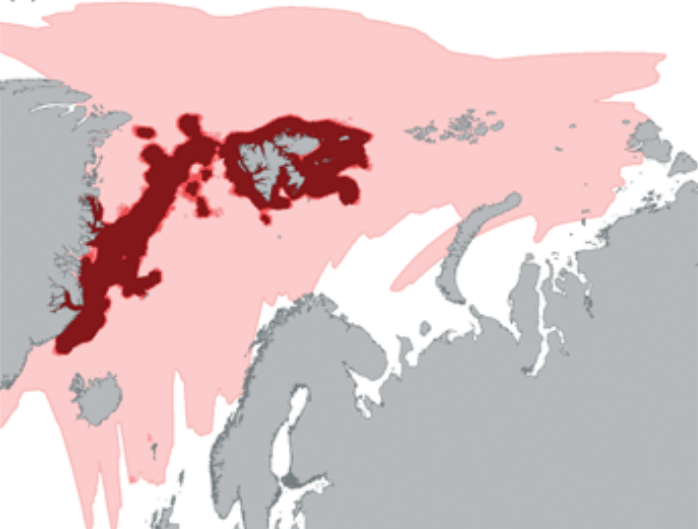5 May 2021: New Article on Marine Mammal Hotspots in the North-East Atlantic
Marine mammals in the Arctic are faced with stressors from large-scale environmental changes and increased human activity in this region. For effective management and conservation, there is an urgent need to learn more about the space use of these species. A new study by Hamilton et al. examines and identifies hotspots for marine mammals in the North-East Atlantic.

The study combines biotelemetry data from 585 individuals deployed in and around Svalbard and Northeast Greenland between 2005 and 2018 by 11 different scientific institutes. A total of 13 marine mammal species, both resident (ringed seal, bearded seal, harbour seal, walrus, harp seal, hooded seal, polar bear, bowhead whale, narwhal and beluga), and 3 seasonally resident (blue whale, fin whale and humpback whale) species are covered.
Hamilton et al. calculated hotspots and areas of high species richness, for each species separately as well as all species combined, for summer/autumn, winter/spring, and the entire year. They present different maps for individual hotspots (areas important to the majority of tagged individuals, such as common foraging and breeding grounds) and location hotspots (areas intensively used by only a few individuals, such as denning locations for polar bears).
The authors conclude that the marginal ice zone (MIZ) and the coastal regions and fjords of both Svalbard and Northeast Greenland are key habitats for marine mammals in the North-East Atlantic. As the MIZ is highly variable in terms of location and extent, Hamilton et al. suggest that any management and conservation plan for this region needs to be flexible accordingly. This would not only benefit marine mammals, but also the many bird and fish species that make use of the high biological productivity in these hotspots.
Several members of the NAMMCO Scientific Committee co-authored this publication. The article is open access and available here.


